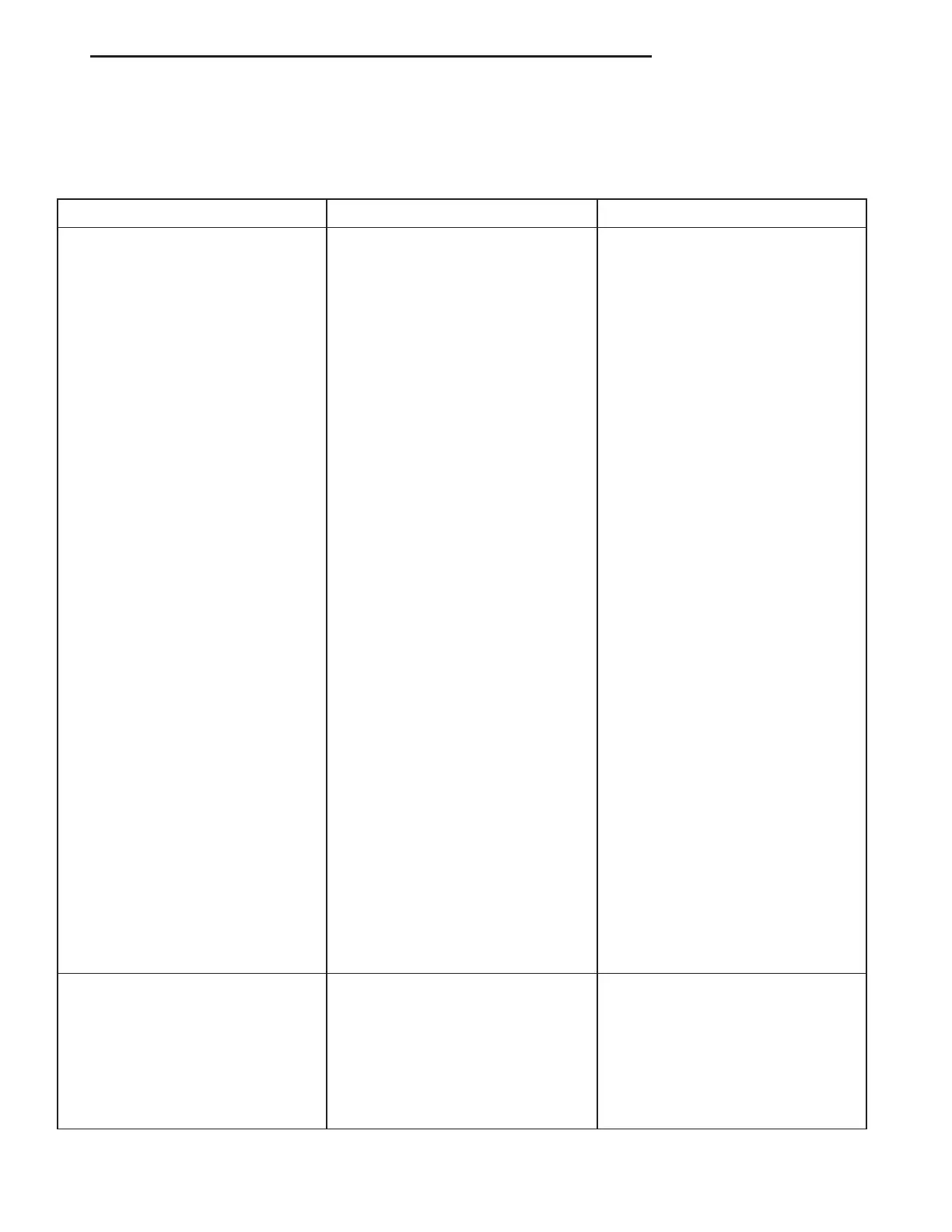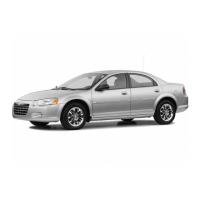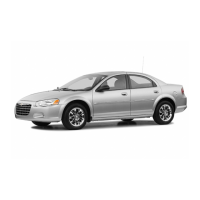DIAGNOSIS AND TESTING
COOLING SYSTEM DIAGNOSIS
CONDITION POSSIBLE CAUSES CORRECTION
TEMPERATURE GAUGE READING
IS INCONSISTENT (FLUCTUATES,
CYCLES OR IS ERRATIC).
1. During cold weather operation
with the heater blower in the high
position, the gauge reading may
drop slightly. Fluctuation is also
influenced by loads, outside
temperature, and cycling of the air
conditioning system.
1. A normal condition. No correction
is necessary.
2. Temperature gauge or engine
sending unit sensor defective or
shorted. Also, corroded or loose
wiring in this circuit.
2. Check operation of gauge and
repair if necessary. Refer to
INSTRUMENT PANEL AND
SYSTEMS.
3. Gauge reading rise when vehicle
is brought to a stop after heavy use
(engine still running).
3. A normal condition. No correction
is necessary. Gauge reading should
return to normal range after vehicle
is driven.
4. Gauge reading high after
restarting a warmed-up (hot)
engine.
4. A normal condition. No correction
is necessary. The gauge should
return to normal range after a few
minutes of engine operation.
5. Coolant level low (air will build
up in the cooling system causing
the thermostat to open late).
5. Check and correct coolant leaks.
Refer to Testing Cooling System for
Leaks in this section.
6. Cylinder head gasket leaking
allowing exhaust gas to enter
cooling system causing thermostat
to open late.
6. (a) Check for cylinder head
gasket leaks with a commercially
available block leak tester. Repair
as necessary.
(b) Check for coolant in engine oil.
Inspect for white steam emitting
from exhaust system. Repair as
necessary.
7. Water pump impeller loose on
shaft.
7. Check water pump and replace
as necessary. Refer to Water Pump
Removal in this section.
8. Air leak on the suction side of
water pump allows air to build up in
cooling system causing thermostat
to open late.
8. Locate leak and repair as
necessary.
PRESSURE CAP IS BLOWING
OFF STEAM AND/OR COOLANT.
TEMPERATURE GAUGE READING
MAY BE ABOVE NORMAL BUT
NOT HIGH. COOLANT LEVEL MAY
BE HIGH IN COOLANT RESERVE/
OVERFLOW TANK.
1. Pressure relief valve in radiator
cap is defective, or was not
properly seated.
1. Check condition of radiator cap
and cap seal. Refer to Pressure
Cap in this group. Replace cap as
necessary.
2. Incorrect cap was installed. 2. Replace cap as necessary.
3. Incorrect coolant mixture. 3. Make sure a 50% by volume
mixture of coolant is used.
LH COOLING SYSTEM 7 - 11

